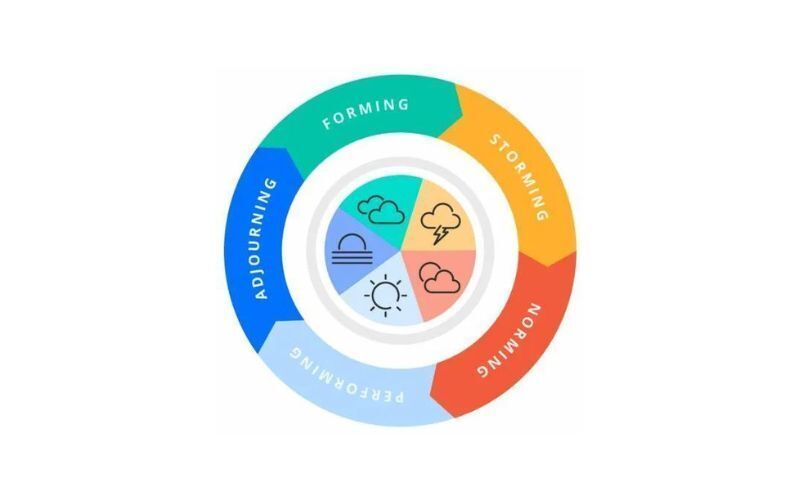Forming, Storming, Norming, and Performing
The Tuckman model is a well known way for team members to reflect on what is happening in their work situation. However, it is a good way for compassionate initiative teams to review what is happening with their group. A good article to explore on the Tuckman Model can be found in the work of Scott Graffius.
Tuckman's Model for Nurturing a Team to High Performance
You can't just switch on teamwork. It takes time for a new team to "gel" and work to its full potential. What's more, team members go through stages as they move from strangers to co-workers.
Bruce Tuckman's Forming, Storming, Norming, and Performing model describes these stages. When you understand Tuckman's model, you'll know how to help your new team to become effective.
Where Does Forming, Storming, Norming, and Performing Come From?
Psychologist Bruce Tuckman came up with the memorable phrase "forming, storming, norming, and performing" in his 1965 paper, "Developmental Sequence in Small Groups." It describes the path that teams follow on their way to high performance. Later, he added a fifth stage, "adjourning" (also known as "mourning") to mark the end of a team's journey.
What Happens at Tuckman's Forming Stage?
In the beginning, when a new team forms, individuals will be unsure of the team's purpose, how they fit in, and whether they'll work well with one another. They may be anxious, curious, or excited to get going. However they feel, they'll be looking to the team leader for direction.
This may take some time, as people get to know their new colleagues and one another's ways of working.
What Did Tuckman Mean by Storming?
In the storming stage, people start to push against the established boundaries. Conflict or friction can also arise between team members as their true characters–and their preferred ways of working–surface and clash with other people's.
At this stage team members may challenge authority or management style, or even the team's mission. Left unchecked, this can lead to face-to-face confrontations or simmering online tensions.
If roles and responsibilities aren't yet clear, individuals might begin to feel overwhelmed by their workload or frustrated at a lack of progress.
How Do We Recognize the Norming Stage?
Gradually, the team moves into the norming stage. People start to resolve their differences, appreciate one another's strengths, and respect your authority as a leader.
Now that they know one another better, your team members will feel more comfortable asking for help and offering constructive feedback. They'll share a stronger commitment to the team's goals, and they should make good progress toward it.
What Does the Performing Stage Look Like?
Now your team is in flow and performing to its full potential. With hard work and structured processes, the team is likely to achieve its goals efficiently.
Judith Stein, from MIT's HR department, says of this stage, "Roles on the team may have become more fluid, with members taking on various roles and responsibilities as needed. Differences among members are appreciated and used to enhance the team's performance."
What About Tuckman's Adjourning (or Mourning) Stage?
Many teams reach this stage naturally. For example, projects come to an end, or permanent teams are disbanded and people redeployed.
People who like routine, or who have developed close working relationships with colleagues, may find this time difficult.
Using the Forming, Storming, Norming, and Performing Tool
Follow the steps below to ensure that you're doing the right thing at the right time:
- Identify the stage that your team is at from the descriptions above.
- Consider what you need to do to move on to the next stage.
- Schedule regular reviews of where your team is at, and adjust your behavior and leadership approach accordingly.
Tuckman's model isn't a one-way street – teams may go back and forth between stages. When you hit the performing stage, keep observing your team's progress in case it slips back. For example, a new team member can disrupt the group dynamic, or a new business direction might mean you have to reevaluate your team roles and goals.

